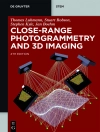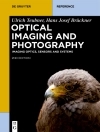Master’s Thesis from the year 2018 in the subject Physics – Optics, grade: 1, 3, University of Hannover (Hannoversches Zentrum für optische Technologien), language: English, abstract: In this thesis, an existing non-contact dermatoscope will be further developed on the basis of knowledge and experience, and established as a new prototype for dermatoscopy at the Hannover Institute of Optical Technologies (HOT).In this system, the light generated by a white LED is collimated and polarized by a lens system, and generates a homogeneous light spot at a distance of 60cm. By cross polarization, the light reflected directly onto the skin surface can be suppressed, so that only light reflected in deeper skin layers can pass through the analyzer, and contributes to the image information. Due to the difficult handling of the original device, the further developed (advanced) system was compactified and automated, taking into account the basic principle of non-contact dermatoscopy. The illumination unit used in the original non-contact dermatoscope was replaced with a newly constructed reflector in order to improve the brightness, and the homogeneity of the light spot in the target area. These two reflectors were measured with a near field goniophotometer to characterize the illuminance distribution. The conducted tests included the definition of an ideal setup of the lens system, both in practice, and in optical systems simulations by using Zemax. It could be shown that the reflectors improve the illuminance, and generates a homogeneous light spot in the target area, which homogeneously illuminates the image area of the camera. Furthermore, this system has been completely automated by providing automatic focus as well as adjustment of one of the polarizers (analyzer) used. For this purpose, a automatic focus lens was integrated on the existing objective and a mid range infrared distance sensor was installed into the system. By various tests, such as the determination of the resolution with the modulation transfer function, the new camera system was characterized. Based on this tests, the highest possible resolution was determined and the work area could be defined. In this work area structures of 30 μm can be resolved sharply. In addition to the automation of the focus, a stepper motor has been installed to control the analyzer. A program was written in Lab VIEW, which controls all components, automates the image acquisition, and provides the possibility of image processing (blood contrast enhancement). Subsequently, the entire system has been mounted on a variably adjustable swivel arm, in order to improve the handling for the dermatologist.
Thomas Hildebrandt
Design, simulation, and construction of an illumination unit for non-contact dermatoscopy [PDF ebook]
Design, simulation, and construction of an illumination unit for non-contact dermatoscopy [PDF ebook]
Achetez cet ebook et obtenez-en 1 de plus GRATUITEMENT !
Langue Anglais ● Format PDF ● Pages 88 ● ISBN 9783668806160 ● Taille du fichier 4.0 MB ● Maison d’édition GRIN Verlag ● Lieu München ● Pays DE ● Publié 2018 ● Édition 1 ● Téléchargeable 24 mois ● Devise EUR ● ID 6663021 ● Protection contre la copie sans












